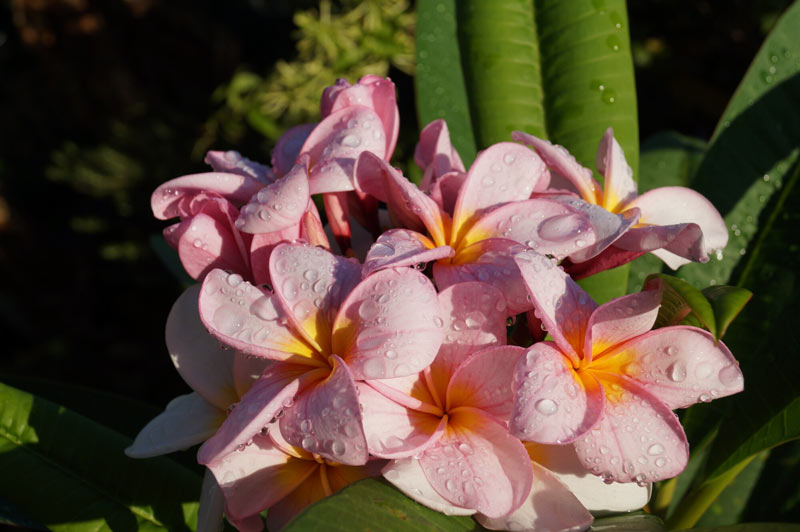About 25% of people every year choose to have a destination wedding. Destination weddings are not just a chance to see a beautiful part of the world, but they also give the opportunity to partake in unique wedding traditions.
Something old, something new, something borrowed, something blue. Why not make you something old, the ancient Polynesian wedding traditions, and your something blue, the clear blue water of the ocean?
Keep reading to find out why Polynesian wedding traditions are so beautiful and meaningful.
What to Wear
A Polynesian wedding may not come with a dress code, but there are certainly traditional options for attire. Tahitian weddings typically feature the bride and groom dressed in a white pareo.
The pareo is a piece of white cloth wrapped around the body. Women have the option to wear it wrapped as a dress while men wear it as a long skirt. While this is the traditional choice, it is not at all required for your wedding. You are more than welcome to wear traditional Western wedding attire, although we recommend a light, breezgy, beachy look to stay cool.
Most couples will also wear leis and flower crowns, but we’ll get to more on that later.
Instead of Walking Down the Aisle
When you arrive at your French Polynesia wedding on the beach, there won’t be an aisle to walk down. Instead, it’s traditional for the bride to arrive via the Tahitian va’a – an outrigger canoe. A man in a pareo will row it.
Sometimes, the groom arrives in the canoe instead, and other times the bride and groom arrive together. The resort will guide you through your options and help you make the right choice.
Once the boat lands, the bride and groom are guided to a circle of flowers on the sand where the wedding ceremony will take place. The bride and groom will either stand in this circle during the ceremony or sit in a traditional rattan chair.
Blowing the Conch Shell
At the beginning of the ceremony, the conch blower will blow into his shell or Pu to call the gods and positive energy to your wedding. It also calls the land, sea, air, and fire to be witnesses to your union.
It’s a magical moment that will imbue your ceremony with a feeling of sacredness and significance.
The Sacred Ceremony
A Tahitian priest will lead your Polynesian traditional wedding ceremony. He will wear a flowing robe in yellow, orange, red, or black and an intricate feathered headdress. He will guide you through the ceremony in both Tahitian and English.
Handfast Blessing
The ceremony starts with the priest blessing you and your spouse with auti leaves. These are the leaves of a special lily plant that has an ancient history of being used for spiritual protection, healing, and purifying. They will ward off evil spirits and inspire the gods’ blessings.
The priest will tear the auti leaves to create two bracelets to tie your hand to your spouse’s hand. It’s traditional to leave these knotted bracelets outside your door after the ceremony to signal that you’d like privacy.
Once your hands have been bound together, the priest will pour lagoon or coconut water over your hands to bind you together and wash away your pasts.
Placing the Leis
At this point in the ceremony, the bride and groom will exchange leis and flower crowns. It’s traditional for leis to be exchanged at every joyous occasion, so it makes sense for the same to happen at your wedding.
The lei is an unbroken circle symbolizing the never-ending joy of life, eternal commitment, and partnership. It also symbolizes the strength of your bond to each other – just as each flower’s beauty is strengthened in its proximity to another.
Traditional flower choices include hibiscus, Tahitian gardenia, and Tipanier, but you can choose another flower if it fits your color scheme better.
Vows and Rings
The following part of the ceremony will look more familiar to a Western audience. At this point in the ceremony, the bride and groom will exchange their vows.
The priest can offer traditional Polynesian vows for you to repeat to each other, but you also have the option to write your own vows to share with your spouse and those gathered with you. You can even do both!
Then, you can exchange your wedding rings and place them on each other’s fingers.
The Nature Prayer
After your vows, the priest will call upon all the forces of nature to witness, protect, and bless your union. Use this quiet moment to reflect on the power and beauty of what you and your spouse decided to do – commit for life.
Tifaifai Wrapping
The final part of the ceremony signaling your complete union is the wrapping in the tifaifai. This woven blanket will be around the two newlyweds to symbolize honor, respect, and love. Traditionally, the blanket would be made by the newlyweds’ mothers and grandmothers.
It’s in the moment that you’ll be allowed to share your first kiss as a married couple.
Tahitian Name
You’ll receive one more very special thing as a part of your wedding ceremony. The priest will give you a traditional Tahitian name that comes to him in a dream before the ceremony. This is a name you will share forever as a married couple.
The Celebration
What is a wedding without a party or celebration? Your Polynesian wedding reception couldn’t be more unique or special. You’ll get to sip pineapple cocktails, attend a Polynesian show featuring dance and impressive feats, and enjoy the beautiful music on the slack-key guitar and ukelele.
Polynesian Wedding Traditions for A Unique Wedding
If you choose to try Polynesian wedding traditions for your ceremony, you won’t regret it. Every step of the Polynesian wedding is filled with romance, sacredness, love, and nature. When you look back at your Polynesian wedding, you’ll know that you had truly the most special day possible.
Do you need help planning your perfect wedding? Contact us to get wedding plan help today!
Wedding Details is your comprehensive guide to all aspects of your wedding. From traditional ceremonies to questions regarding the guests, our website offers you one place to do all your research.

